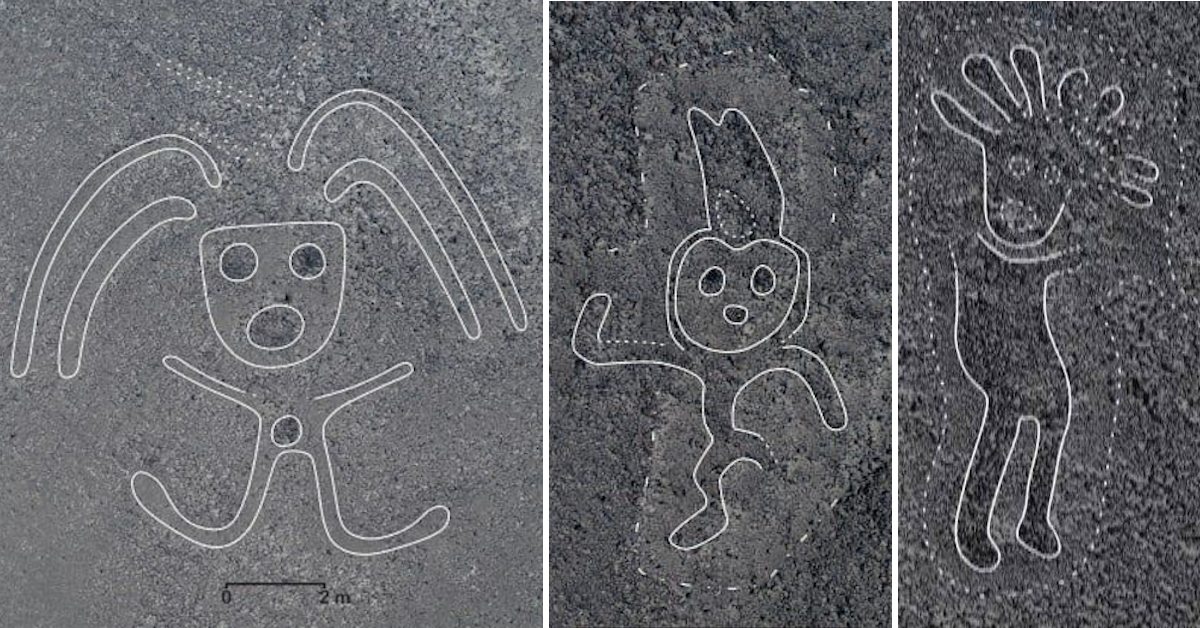Archaeologists have discovered 168 ‘new’ Nazca lines, bringing their total number up to 358.

Following the discovery of an enormous, rather chubby, cat in 2020, a team from Yamagata University has uncovered a large number of additional 2000-year-old etchings at the Nazca Lines site in Peru. The Nazca Lines are a group of mysterious geoglyphs depicting various animals and humans that were made by the Nazca people millennia ago and keep showing up in the Peruvian desert.
The research team has spent nearly a decade at the location 250 miles south of Lima, and between June 2019 and February 2020 they conducted a field study that unveiled 168 previously hidden drawings. The new discoveries were made using aerial photos captured by drones and feature myriad creatures like birds, snakes, orcas, and people – even some that look like children playing, as you can see above.

Archaeologists have discovered two types of geoglyphs on the Nazca Pampa so far: linear and relief (although only five documented during this mission are linear). Many of the newly uncovered drawings are somewhat smaller than many of the others found so far, meaning they can also be seen from the ground.
The drawings were made through the strategic removal of black rocks to expose the differently colored dirt beneath them, and are generally situated around the ancient trails the Nazca traveled.

Although the lines were likely made between 100 BC and 300 AD, the date of their creation is debated, given that the Nazca are thought have stayed in this area between about 600 BCE and 200 BCE.
That’s about a 400 year discrepancy, which is unusual in modern science, but not so much in archaeology.

We don’t actually know why the Nazca geoglyphs were created but, of course, there are a lot of theories. It has been suggested that they were used for irrigation, while others think they could be some kind of an astrological calendar or possibly have a religious connotation, depicting the deities of the Nazca culture.
One argument against the irrigation theory is that the Nazca people built much more developed irrigation systems (albeit dated to 500 years later) in the Peruvian desert that work like aqueducts and are still in use today.

The vastness of the area where the Nazca lines are located makes it hard to conserve them all properly, and there are also incursions from urban and economic developments, such as mining-related activities.
Let’s hope that the area can be studied and preserved properly so that one day we can finally understand the purpose of these mysterious etchings.
Sources: 1, 2, 3, 4
